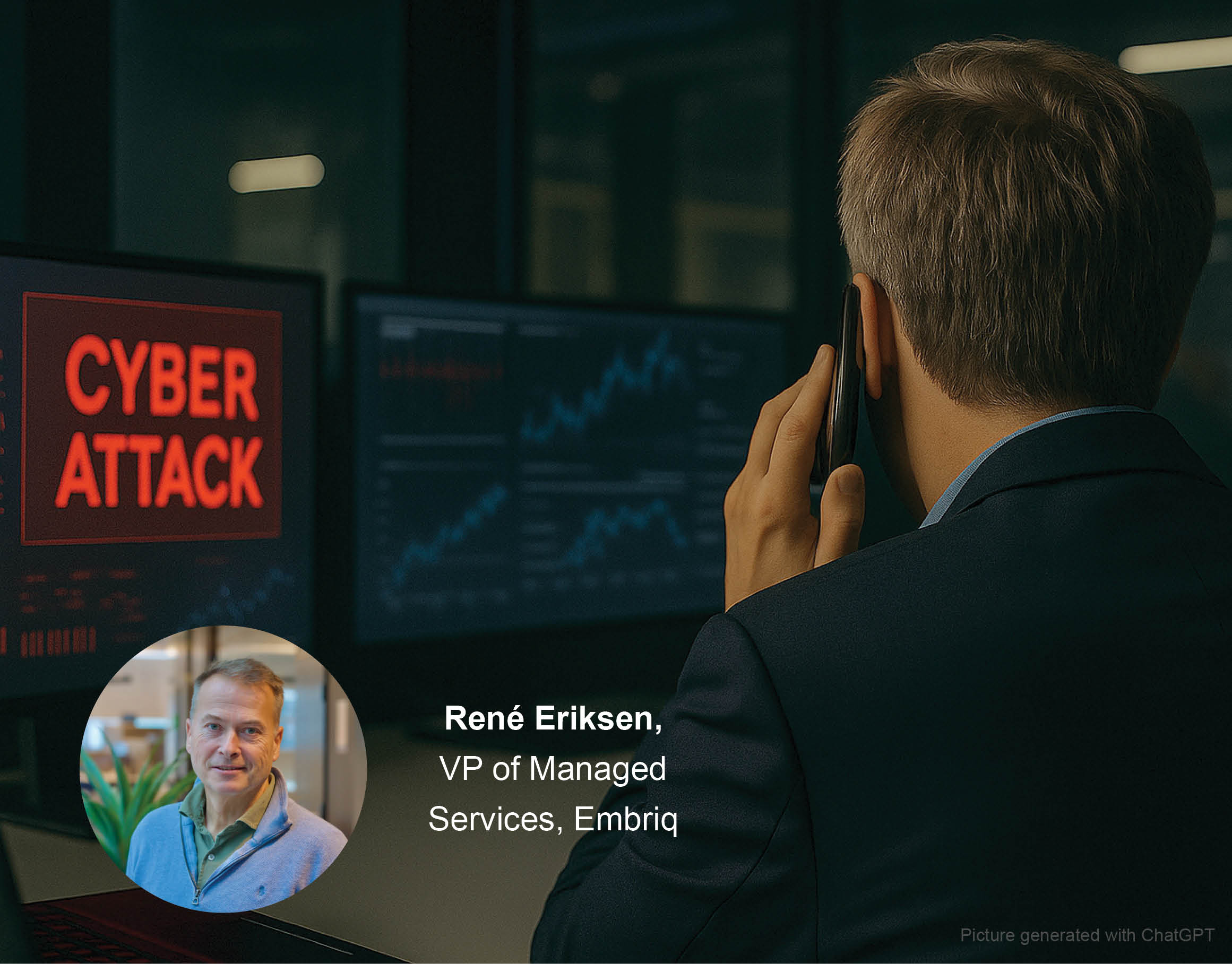Digitalization Comes at a Price: Increased Risk and Higher Costs
Digital transformation has opened up new opportunities—but also new attack surfaces. Cloud platforms, IoT, and complex system landscapes provide cybercriminals with additional points of entry. As digitalization accelerates, both the likelihood and the consequences of attacks grow significantly. That’s why a holistic approach to security is essential, says René.
“The more we digitalize, the more surfaces we expose to potential attacks. That means more vulnerabilities and a greater risk of financial damage,” René explains.
According to the Norwegian National Security Authority’s Risk 2025 report, 76% of Norwegian businesses reported serious ICT-related security incidents in 2024. Real-world examples show that the costs of major cyberattacks often range from NOK 2 to 5 million, but can be much higher in cases of production downtime or loss of sensitive data.
Two publicly known incidents remind us that the threat is real and can affect all industries: Østre Toten Municipality and Norsk Hydro. Østre Toten was hit by ransomware in 2021 and had to spend over NOK 30 million on recovery. In the industrial sector, Norsk Hydro experienced a ransomware attack in 2019 that forced several factories to switch to manual operations. The total estimated financial loss was between NOK 550 and 650 million.

René Eriksen, VP of IT Managed Services
When Production Stops, So Does Revenue
A cyberattack can lead to production downtime, directly impacting revenue by preventing deliveries and operations. René elaborates:
“When an IT or OT system in a factory is compromised, it’s not just production that stops. You risk losing customers, income, and reputation. It can trigger contract breaches and compensation claims. The financial losses can be enormous—and happen very quickly.”
Security Is Not a Cost—It’s an Insurance
Why do we invest in security? To avoid catastrophic losses. That’s exactly how you should view your IT and OT security, says René.
“In times of budget cuts, it’s tempting to reduce spending on security. But when production stops or sensitive data is lost, the consequences can far outweigh the savings,” he warns.
Risk Management Must Be Anchored in Leadership
In today’s digitalized society, most systems are integrated and accessed through personal IDs. It is critical to identify your most important systems, how they are interconnected, how they’re accessed, and what the risks and consequences are if they go down. Business leaders must have visibility and control to ensure a holistic security strategy.
“The most important thing is to segment your systems and protect the most valuable parts. You need to understand how your platform is integrated and how it can be accessed. Not everything requires the same level of protection, but your most critical assets must be secured holistically. Emergency response plans are key to minimizing damage,” René concludes.
Security Is a Continuous Process
Security isn’t a one-time task. The threat landscape evolves constantly, and your efforts must be ongoing. From CFO to production manager—everyone must understand the risks and contribute to reducing them.
It’s not a matter of if you get attacked—but when. The real question is:
Can you afford to be unprepared when it happens?



